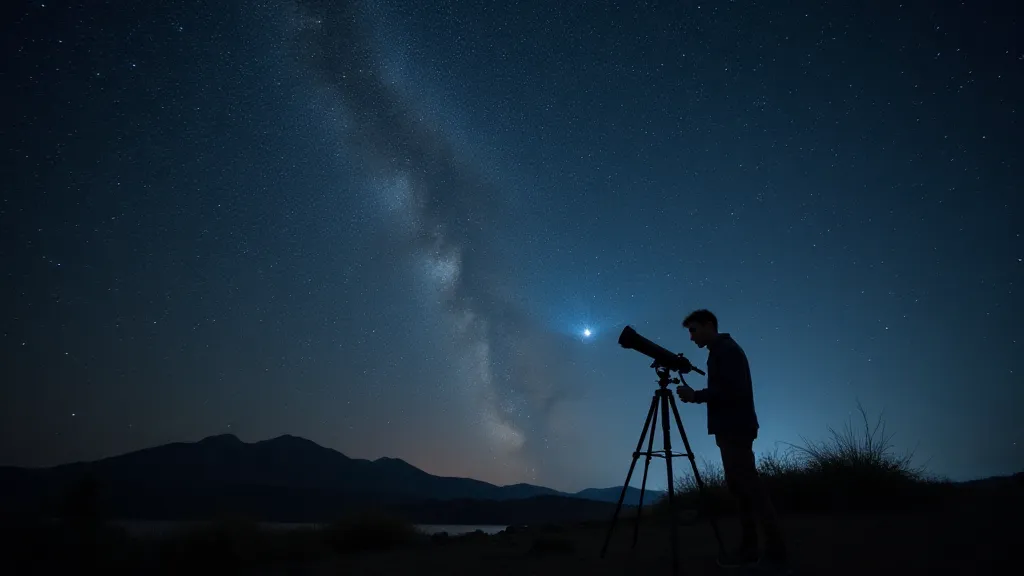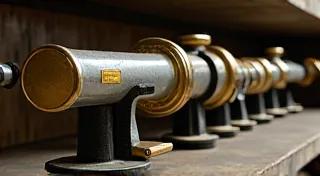Equatorial vs. Altazimuth: Choosing Your Cosmic Compass
There’s a quiet beauty, a soulful resonance, in witnessing something built to last. Think of an antique accordion, its bellows worn smooth by countless hands, its keys a testament to the patient skill of the craftsman. Each button, each reed, meticulously placed to produce a sound that echoes through time. It’s the same sense of enduring purpose that draws so many to astronomy. Choosing your first telescope – and more crucially, the mount upon which it sits – can feel overwhelming. It’s about more than just magnification; it’s about finding a tool that aligns with your observing ambitions and connects you to the vastness above. Today, we’re diving into the crucial differences between equatorial and altazimuth mounts, considering their strengths, weaknesses, and the kinds of observing experiences they offer.

Understanding the Basics: Altitude, Azimuth, and Right Ascension
Before we contrast the two mount types, let’s establish some terminology. An altazimuth mount, as the name suggests, tracks objects in altitude (up/down) and azimuth (left/right). Imagine a compass – that's azimuth. Now, think of how high something is in the sky – that’s altitude. These are intuitive axes; they directly reflect how you see the sky. An equatorial mount, on the other hand, aligns with the Earth’s axis of rotation. It has one axis that matches the Earth’s tilt (the polar axis) and a second axis that rotates around it.
This difference in design isn't merely academic; it fundamentally impacts how each mount behaves as the Earth rotates. Altazimuth mounts require you to manually adjust both altitude and azimuth to keep an object centered in the eyepiece. An equatorial mount, once properly aligned (polar aligned), compensates for the Earth’s rotation, keeping the object locked onto a single point in the eyepiece. The act of polar aligning – finding the celestial north pole – can seem daunting, but many modern equatorial mounts have built-in polar alignment assistance, greatly simplifying the process.
The Simplicity and Versatility of Altazimuth Mounts
Altazimuth mounts are often the default choice for first-time telescope owners. Their design is inherently simpler, leading to a lower price point and often lighter weight. This makes them easier to transport and set up. Think of it as the dependable workhorse of the telescope world. They are fantastic for visual observing, especially for scanning the skies in search of brighter objects like the Moon, planets, and open star clusters. The ease of movement allows you to quickly hop between targets, enjoying a wider, more panoramic view of the night sky. This also makes them quite suitable for those interested in trying their hand at DIY astronomy and perhaps even constructing their own telescope.
Many Dobsonian telescopes utilize altazimuth mounts. Dobsonians are renowned for their large aperture – meaning they gather a lot of light, allowing you to see fainter objects – and their relatively low cost. Their simple design prioritizes light gathering, offering an unparalleled visual experience for those interested in deep-sky observing. Just as a skilled accordion player can coax surprising nuance from a relatively simple instrument, a skilled observer can leverage a Dobsonian’s aperture to unveil breathtaking detail in nebulae and galaxies. There's a certain satisfaction in the straightforward mechanics, a tangible connection to the principles of optics and mechanics.
The Precision of Equatorial Mounts: Tracking the Cosmos
Equatorial mounts shine when it comes to long-exposure astrophotography and extended visual observing. The ability to precisely track an object without constant manual adjustments is invaluable. Imagine meticulously restoring an antique accordion, cleaning each reed, replacing worn leather – the dedication required mirrors the patience needed for astrophotography. A single moment of misalignment during a long exposure can ruin an image, and equatorial mounts provide the stability and accuracy needed to minimize this risk. For those serious about capturing those images, understanding how atmospheric turbulence affects observations is key – and techniques like adaptive optics can play a vital role in enhancing image clarity.
For visual observers who enjoy spending hours observing a single object, such as Saturn’s rings or Jupiter’s cloud bands, equatorial mounts offer a significantly more comfortable experience. They allow you to settle in and truly appreciate the subtle details without the constant effort of manual tracking. The precision also allows for the use of higher-powered eyepieces, revealing finer details that would be impossible to see with an altazimuth mount due to the shaking and drift. Furthermore, observing the intricate details of planetary atmospheres can be significantly impacted by the quality of your optics; techniques used in planetary portraits provide insight into achieving the best possible views.

Considerations: Polar Alignment & Cost
The primary downside to equatorial mounts is the need for polar alignment. This process can be challenging for beginners, though modern mounts often incorporate features to simplify it. Some have GPS and automatic polar alignment capabilities, which significantly reduce the setup time and complexity. However, these features come at a premium. Equatorial mounts are generally more expensive than comparable altazimuth mounts due to their more complex mechanical design and the increased precision required in their manufacture.
Another factor to consider is portability. Equatorial mounts tend to be heavier and bulkier than altazimuth mounts, making them less convenient for transporting to dark-sky locations. However, advancements in mount technology are continually reducing their weight and size. Of course, no matter which mount you choose, light pollution can be a significant barrier to clear observations; implementing strategies to minimize the effects of light pollution’s shadow in urban environments is often essential for maximizing viewing enjoyment.
Which Mount is Right for You?
Ultimately, the best choice depends on your observing goals and budget. Here’s a quick summary:
- Altazimuth Mount: Best for beginners, visual observing, scanning the skies, portability, budget-friendly.
- Equatorial Mount: Best for astrophotography, long visual observing sessions, higher-powered eyepieces, those willing to invest time in learning polar alignment.
There’s no right or wrong answer. Just as a passionate accordion collector might appreciate the historical significance and unique qualities of various models, an astronomer can find immense satisfaction in different telescope configurations. Whether you choose the simplicity of an altazimuth or the precision of an equatorial, the universe awaits, ready to reveal its wonders.

Beyond the Basics: Go-To Mounts
A final note: Both altazimuth and equatorial mounts are available in "Go-To" versions. These mounts utilize computerized systems to automatically locate and track celestial objects. They can significantly simplify the observing experience, especially for beginners. However, they add complexity and cost, and some purists argue that they detract from the sense of discovery that comes from manually locating objects. Choosing to learn the night sky yourself, even with a Go-To mount, can be a rewarding journey – a personal exploration of the cosmos, just as learning to play an accordion unlocks a universe of musical possibilities.
Ultimately, maximizing your enjoyment and achieving the clearest possible observations requires an understanding of many aspects of astronomy, from the principles of optics to the challenges of atmospheric conditions. By carefully considering your goals and budget, and by exploring the wealth of resources available to amateur astronomers, you can embark on a truly unforgettable journey of cosmic discovery.





